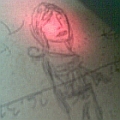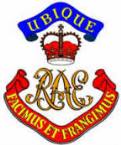Alfred
Posts: 6685
Joined: 9/28/2006
Status: offline

|
The following AE Kamiklaze Capability 101 Guide has benefited from prior feedback provided by dr hal. His feedback was directed at improving the readability of the earlier drafts and making explanations clearer. I remind readers that as under the hood details can not be provided, any requests for further clarification which steps into that area, will be ignored by me. As it is presented, the guide provides the most detail posted to date on the subject.
AE KAMIKAZE CAPABILITY 101 GUIDE
Part 1 - Introduction
1. OVERVIEW OF KAMIKAZE IN AE
Historically, kamikaze actions were almost exclusively undertaken by Japanese aircraft. The bulk of these kamikaze air incidents were undertaken by specially tasked Japanese air units and were formally planned operations, however informal incidents also arose when individual pilots decided, on an ad hoc basis, to ram their aircraft against an Allied ship or plane.
Compared to the air kamikaze incidents, there were very few naval kamikaze incidents although preparations were made to unleash substantial naval kamikazes on the expected Allied invasion of the Home Islands.
This guide explains the game’s abstraction of the historical Japanese kamikaze capabilities into three different game components. The availability and use of these game components is explained in the guide.
The historical formal air kamikaze incidents are enabled by the kamikaze air mission in AE. The kamikaze air mission is only available to dedicated special status kamikaze air units. This capability is addressed in Part 2 of the guide. The informal individual pilot kamikaze actions are covered by the individual ramming air actions witnessed in standard game air missions and recorded in the Combat Report. These incidents are discussed in Part 3 of the guide. Both types of air kamikaze capabilities are covered by special game code. The historical naval kamikaze capabilities are abstracted to specific devices. There is no special game code associated with these devices. Part 4 of the guide discusses these sundry capabilities.
Part 2 – Planned Air Kamikaze Operations
2. KAMIKAZE AIR MISSION
The kamikaze air mission is only available to Japan. It is essentially a variant of the Naval Attack air mission which targets only Allied non submarine task forces and therefore shares the same common limitations of the Naval Attack air mission, two such common limitations being a minimum level 2 airfield required for launching and enemy task force target selection is determined by the computer. All aircraft types other than transport aircraft can undertake this mission. Specific characteristics applicable only to the Kamikaze Attack air mission are listed in sections 2.4 to 2.6 of the guide.
Unlike the informal ad hoc kamikaze ramming action which is explained in Part 3 below, the formal Kamikaze Attack air mission involves several elements under player input. These elements include:
• selection of standard air units eligible for conversion to kamikaze status
• appropriate pilot training for kamikaze operations
• appropriate airframe selection for kamikaze operations
The Kamikaze Attack air mission can only be undertaken by standard air units which have been converted to the special kamikaze status. Once a unit has been converted to kamikaze status, it can never be converted back to its original status.
An executed Kamikaze Attack air mission results in the total loss of all aircraft and pilots. After executing the mission the unit needs to be replenished with fresh airframes and pilots.
2.1 Conditions for availability of the Kamikaze Attack air mission
The formal Kamikaze Attack air mission will not become available before 1 January 1944. After that date the option for the Japanese player to convert standard air units to kamikaze status becomes available if the Allied player owns a base 20 sea hexes or less from Tokyo, Takao or Saigon. Note that as originally released and referred to in section 7.4.2.3 of the manual, AE retained the classical WITP trigger range of 15 hexes. That was an oversight which had not taken into account the changed hex size in AE. The oversight was corrected in patch #2 of December 2009.
There are two important limitations on what qualifies as a triggering Allied base. To qualify the Allied base must:
• not be located in China or Tibet (nationality codes 70 and 71 respectively)
• contain an air field which is sized level 1 or greater
There is no requirement for the Allied base to have been previously captured by Japan and subsequently recaptured by the Allies. Nor is it limited only to bases which were Allied controlled at the start of the scenario. Prior to Soviet activation, Soviet nationality bases (nationality code 90) are not checked for triggering purposes.
Once the Kamikaze Attack air mission becomes available there is no requirement that the initial triggering base remains under Allied control.
2.2 Conversion of standard air unit to special Kamikaze status
The existence of a triggering Allied base after 1 January 1944 does not automatically result in any standard air unit becoming available to be converted to the special Kamikaze status. Nor is there a universal button which brings up a list of standard air units eligible for conversion. Standard air units not eligible for conversion have their conversion button greyed out on their unit screen. The button is enabled for an eligible unit after the triggering mechanism as described have been met.
There are several conditions to be met by each air unit for their conversion to be available. If the conditions are met, it is up to the Japanese player to determine whether or not to convert a standard air unit to kamikaze status, the computer will not automatically convert eligible units.
To be eligible for conversion the standard air unit must meet all of these conditions:
• have an experience level of less than 50
• have a morale level above 70
• not be flying transport type aircraft
• not be a fragment
It is not possible to convert the entire Japanese air force (excluding transport units) to the special kamikaze status. After the Kamikaze Attack air mission becomes available the game tracks the number of unused conversions. The track counter is not set to start from 1 January 1944 but only from the date the mission availability is triggered. A daily eligibility rate for conversion of 1 is then applied to the tracking counter. The counter is capped to a maximum of 7 unused conversions.
A standard fighter air unit can be converted to kamikaze fighter status, or a standard level bomber unit can be converted to kamikaze level bomber status and so on. However, a standard fighter air unit cannot be converted to a kamikaze level bomber unit, nor can a standard level bomber unit be converted to a kamikaze dive bomber unit and so on.
Players need to carefully weigh up whether the benefits and costs of launching a Kamikaze Attack air mission are greater than the benefits and costs of launching a Naval Attack air mission. Besides the opportunity cost of the special status kamikaze air unit no longer being able to undertake any of the other standard air missions (except training) the cost in supply and heavy industry points expended in replacing all pilots and airframes after each pressed Kamikaze Attack air mission is a significant logistical burden at a stage in the war when the Japanese economy is probably already subject to logistical constraints.
2.3 Pilot training
There is no separate kamikaze pilot skill attribute. The specific skill used when making a kamikaze attack is Naval (Low). Accordingly for a direct benefit, pilots should be trained in Naval Attack at 1000 feet altitude. Pilots can be set to improve this skill level before the Kamikaze Attack air mission becomes available. Training other skills will assist in raising the pilot’s overall experience level which provides indirect benefits.
2.4 Attack profile
A kamikaze air unit can be assigned any altitude by the Japanese player. The kamikaze air unit will fly at the player assigned altitude to the hex occupied by its target. The player assigned altitude is factored into the Allied raid warning time algorithms which provide an estimate of the incoming raids altitude. This Allied estimate feeds into the pre-existing Allied CAP profile.
However, similar in concept to the attack profile of aircraft delivering torpedoes, irrespective of the altitude assigned by the Japanese player, the actual attack run is always conducted at two set altitude settings. For the initial flak engagement, the kamikaze air unit approaches its task force target at 9000 feet. It then drops to 100 feet for the attack run.
Only aircraft which survive contact with Allied CAP and flak are candidates for achieving a hit on an Allied ship. At the conclusion of the attack, any remaining unit aircraft and pilots are lost. There is no recovery of downed pilots by friendly assets in the immediate area.
2.5 CAP and flak evasion factors
The degree of a kamikaze unit surviving contact with Allied CAP and flak to achieve any hits on Allied ships is significantly influenced by prior player input in two key areas; pilot quality and airframe selection.
Whilst unit eligibility for conversion to kamikaze status requires the unit to have a relatively low experience level (see section 2.2 above), after conversion the unit can undertake training, or draft into the unit appropriately trained pilots (see section 2.3 above). Highly experienced kamikaze units with highly skilled pilots will generally perform better than less experienced/skilled units/pilots.
The main threat to a kamikaze unit is posed by Allied CAP. Consequently, in addition to pilot quality, the most valuable kamikaze airframe metrics are:
• airspeed
• manoeuvrability
• durability
These airframe metrics are relevant factors in determining whether the aircraft will survive long enough to be a candidate to inflict a hit on an Allied ship.
Allied CAP efficacy is dependent on whether it is in position to meet the incoming raid at the initial flak altitude and subsequent attack run altitude (see section 2.4 above). Allied CAP may not always be at the optimum altitude to intercept the kamikaze attack due to prior inaccurate radar estimates or interception of other Japanese air attacks.
An important Japanese player input which can increase the chances of a dedicated kamikaze status air unit achieving kamikaze hits is to assemble a strong non kamikaze fighter escort. Subject to the usual air combat factors, the escorting non kamikaze fighters will first tangle with the Allied CAP. To increase the odds of assembling a large coordinated strike the escorting non kamikaze fighters should be assigned the same altitude as that assigned for the kamikaze unit and be attached to the same Air HQ.
2.6 Damage inflicted by a kamikaze hit
Historical kamikaze aircraft inflicted damage could result from three sources; bomb ordnance carried, airframe mass, and aircraft fuel tanks. In AE these three historical sources are abstracted into different hit possibilities. This is a significant departure from standard aircraft attacks which, in determining the damage level inflicted from a hit, are limited to the ordnance employed. Airframe mass and fuel tanks are not abstracted into standard aircraft attacks.
It is important to understand that in AE, each kamikaze aircraft which actually achieves a hit on an Allied ship scores only one single hit, not multiple hits, on that ship. The damage level inflicted by the hit itself will be determined from one of the abstracted hit possibilities. The abstracted hit possibilities are mutually exclusive. An airframe which carries no ordnance whatsoever, may achieve a bigger “boom” than one equipped with an 800kg bomb.
In terms of inflicting damage, another relevant consideration is that airframe models are abstracted by aircraft type, not by ordnance carried.
2.7 Defence against kamikaze aircraft
The primary Allied defence against kamikazes is a strong CAP. Flak will down some Japanese kamikazes but usually the overwhelming number of downed Japanese kamikazes will be due to the efforts of CAP.
Allied players should pay close regard to the set altitudes outlined in section 2.4 above when determining their CAP altitude. Good, up to date radar, by providing timely early warning of an incoming raid, will assist in improving CAP performance.
Part 3 – Unplanned Air Kamikaze Incidents
3. RAMMING
Unlike the formal kamikaze air mission and special kamikaze air unit status which cannot occur before 1 January 1944, ramming can occur at any stage from 7 December 1941. The chance of it occurring increases each year. It is also an ad hoc action taken by individual fighter pilots and not by the standard fighter unit. The standard fighter unit retains any pilots/airframes who survive the Allied CAP, flak and the return flight to its home base. There is even a chance the Japanese ramming pilot will survive the action.
Another significant difference with the formal kamikaze mission, which only targets Allied non submarine task forces, is that a ramming action can occur against an Allied surface ship or aircraft. The most common ramming attacks will be made against American Attack and Heavy Bombers due to their heavy defensive fire against enemy aircraft. This is particularly so if the Japanese fighter attacks from the frontal vector. Which vector is chosen for attack is solely determined by the computer.
Essentially ramming provides a bonus opportunity for a doomed Japanese fighter to cause some additional damage before crashing on the return trip.
3.1 Trigger
There is no Japanese player input in triggering a specific ramming attack.
Ramming may ensue when a Japanese fighter is so heavily damaged that it is unlikely to survive the return trip back to base. To qualify for ramming the damaged Japanese fighter must:
• have damage greater than 80% of its durability rating, and
• pass the year based ramming check
An undamaged Japanese fighter will never make a ramming attack.
3.2 Damage inflicted by a ramming hit
A ramming hit does not guarantee that any further damage will be inflicted upon the target. Whether a hit results in any additional damage to an Allied bomber is dependent on die rolls and the relative durability of the Japanese fighter.
A Japanese fighter which rams an undamaged Allied bomber is most unlikely to destroy the Allied bomber outright or cause sufficient damage to cause the bomber to crash on the return flight to base. Usually the aggregated damage from Japanese flak/CAP/ramming will be required for there to be a chance the Allied bomber crashes on the return trip back to base.
Part 4 – Abstracted Sundry Kamikaze Capability
4. DEVICES
The other historical kamikaze-like actions undertaken, or prepared for, by Japan are not directly modelled in AE primarily due to engine difficulties but also their extremely limited actual war deployment and effectiveness. This could not justify the expenditure of further AE development effort. They are however not totally absent from AE, instead being represented by specific devices.
4.1 Kaiten
The historical Kaiten were standard torpedoes adapted to be piloted by a human. Their actual war performance was abysmal. In AE, the Kaiten are represented as a torpedo device with inferior statistics compared to that of the standard torpedo devices they were based upon.
4.2 Shinyo
The historical Shinyo were small speed boats primarily intended to ram Allied ships participating in the expected invasion of the Home Islands. Training was poor and much more damage was caused to Japanese forces during training than was inflicted upon the Allies. In AE they are found in the hypothetical “Downfall” scenario as a device equipping a CD unit or as short range MTB type ships.
4.3 Okha
The historical Okha were air to surface missiles launched at a stand off range by Betty bombers. In AE they are a device carried as normal ordnance by the G4M2e Betty when the device enters production. As released the scenario designers failed to allocate a factory or a build rate, for their production. This omission has since been corrected with updated scenarios uploaded to the AE forum.
Alfred
|
 Printable Version
Printable Version




















 New Messages
New Messages No New Messages
No New Messages Hot Topic w/ New Messages
Hot Topic w/ New Messages Hot Topic w/o New Messages
Hot Topic w/o New Messages Locked w/ New Messages
Locked w/ New Messages Locked w/o New Messages
Locked w/o New Messages Post New Thread
Post New Thread